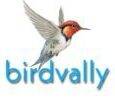The hummingbird season generally ends in the northern hemisphere around October and November. In the southern hemisphere, it can extend into December or January.
hum·ming·bird
/ˈhʌmɪŋˌbɜrd/
noun
1. a very small Old World bird with iridescent plumage, feeding on nectar and often able to hover in mid-air.
2. (in North America) any of a number of similar New World birds, including the ruby-throated hummingbird.
It’s that time of year again when we start to see those little feathered friends zipping around our gardens and yards, collecting nectar from flowers.
But when does hummingbird season end?
In most parts of the United States, hummingbird season officially comes to an end on October 31st. However, there are always a few stragglers that linger into November or even December before finally heading south for the winter.
So if you’re still seeing hummingbirds after Halloween, don’t be too surprised!
Of course, just because the season is technically over doesn’t mean you can’t still enjoy watching these amazing creatures. If you live in an area where hummingbirds are common, keep your feeders up and running until you’re sure all the birds have left for their winter homes.
You might even get lucky and have a late visitor or two!
When does hummingbird season end?
When Do You Put Hummingbird Feeders Away
The question of when to take down a hummingbird feeder is a common one among birders. There are a few schools of thought on this topic, so ultimately it comes down to personal preference. Some people believe that it’s best to take the feeders down as soon as the last hummingbird of the season is spotted, while others leave them up until frost or winter weather arrives in their area.
If you decide to take your feeders down at the end of hummingbird season, be sure to clean them thoroughly before storing them away. This will help prevent the spread of any diseases that may have been present on the feeders. It’s also important to note that taking down your feeders too early could cause problems for late-arriving birds that are still migrating through your area.
If you choose to leave your feeders up during winter, there are a few things you can do to help ensure the safety of any birds that may use them. First, make sure they’re placed in an area that won’t be subject to freezing temperatures. You can also add a little bit of sugar water to the solution in order to help keep it from freezing solid.
Additionally, placing a heater near the feeders can help keep them from freezing over and becoming unusable for birds.
Whichever route you choose, just be sure that you’re consistent with it from year to year so as not to confuse or stress out any local hummingbirds!
When Should I Take down My Hummingbird Feeder?
As the weather starts to cool down in the fall, so does the activity of hummingbirds. They begin their migration southward in search of warmer climates and more food sources. This means that if you live in a northern climate, at some point you’ll need to take down your hummingbird feeder for the season.
The exact time to take down your feeder will depend on when the last hummingbird is spotted in your area. In general, it’s best to err on the side of caution and take down your feeder a little earlier rather than later. That way, you won’t accidentally attract any late-migrating hummers after they’ve already started their journey south.
Once you’ve taken down your feeder, be sure to clean it thoroughly before storing it away for the winter. This will help prevent any mold or bacteria from growing and potentially harming future generations of hummingbirds.
How Long Should You Leave Hummingbird Feeders Up in the Fall?
Most people take their hummingbird feeders down in the fall, but you can actually leave them up a little longer if you want to. Here’s what you need to know about when to take your feeders down.
In general, you should start taking your hummingbird feeders down when the last of the hummingbirds have left for their winter migration.
This is typically sometime in October, but it can vary depending on where you live.
Once all the hummingbirds are gone, there’s no reason to keep your feeders up. The sugar water will just go bad and attract other pests like ants.
So, it’s best to take them down and clean them before storing them away for the winter.
If you want to be extra sure that all the hummingbirds have left, you can wait until early November before taking your feeders down. By then, most of them will have migrated south and won’t be coming back until next spring!
Do Hummingbirds Return to the Same Place Every Year?
Yes, hummingbirds typically return to the same place every year. This is because they have a strong migratory instinct and are able to remember where they’ve been before. Hummingbirds usually migrate alone or in small groups, so it’s not uncommon for them to return to the same exact spot year after year.
Is It Too Late in the Season to Put Out a Hummingbird Feeder?
No, it’s not too late in the season to put out a hummingbird feeder! In fact, fall is an excellent time to put out a feeder as the birds are migrating south and will appreciate the extra food.
Conclusion
The hummingbird season generally runs from early spring to late fall, with the peak season being mid-summer. However, there are a few factors that can affect when hummingbird season starts and ends in your area.
